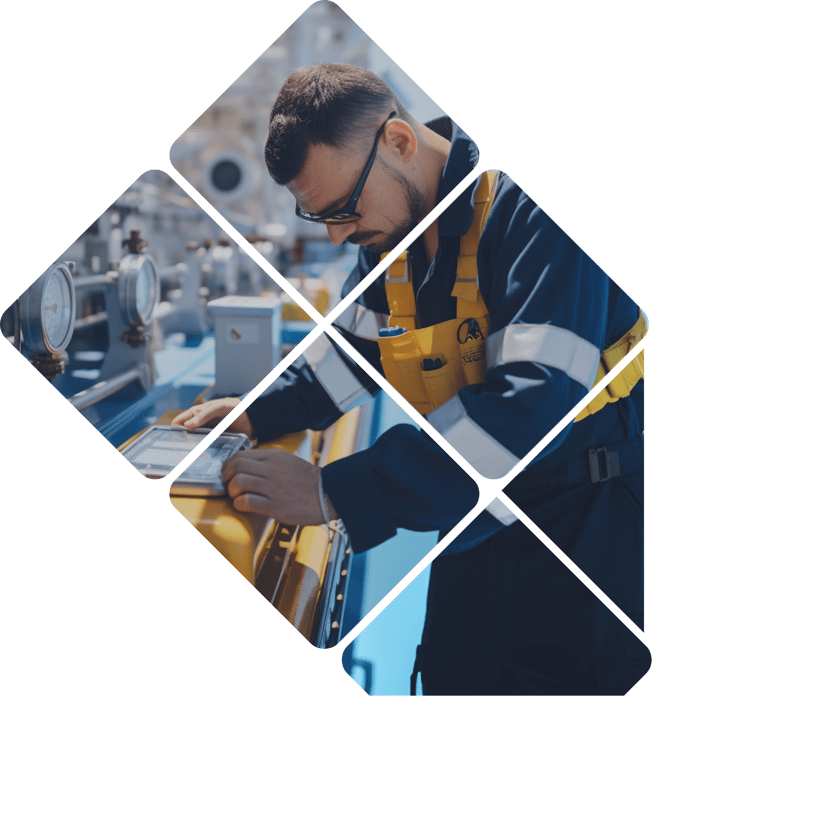Launching a one-stop portal for crew training
The new myBruusgaard portal combines training, testing, and certification into one...

Life at sea involves daily maneuvering between different hazards. Gases is one of them, and it is crucial to understand and recognise dangerous scenarios.
Life at sea is rewarding in many ways, but it also means navigating high-risk environments on a daily basis. Gases are among the most common life-threatening hazards aboard ships, but with the right training and equipment – most accidents can be avoided.
|
Read more: Gas Detection at Sea: The Bruusgaard System Explained |
In the context of maritime operations, we consider three types of gas hazards:
The most common toxic gases at sea are Hydrogen Sulphide (H2S), Carbon Monoxide (CO) and gases from the cargo carried.
Toxic gases are primarily a threat in enclosed spaces, but open spaces can also be hazardous. Ship crew work in a myriad of environments, many of which are prone to contamination.
Gas poisoning occurs through inhalation, ingestion or absorption through the skin. Time is a key factor: Toxicity is a function of concentration and exposure period. The specific thresholds are unique to each gas.

All hydrocarbon gases are flammable, including Methane (CH4), Propane (C3H8) and Butane (C4H10) These, together with gases from cargos like oil or chemicals, represent both a fire and an explosion hazard.
Flammable gases are considered hazardous in all scenarios, but particularly during cargo operation. This is where atmosphere and process control is extremely important.
If we consider the fire triangle (fire requires a source of ignition or heat, oxygen and combustible material), it follows that a ship often has multiple areas where fires and/or explosions can occur.
Flammable gases react with oxygen when they are heated to given temperatures/exposed to a source of ignition, producing flames. Hot or burning gases expand rapidly, so a if a contained or flow-restricted gas catches fire, pressure will increase instantaneously and likely result in an explosion. This will often result in personnel injuries and/or material damage.
Gases that are lit at atmospheric pressure, with unrestricted space to expand, will not explode, but burn rapidly – which of course can be more than hazardous enough. The fire will continue until supply of oxygen or fuel seizes, or if the immediate environment is sufficiently cooled.

The human organism depends on oxygen (O2). Certain gases – like Carbon Dioxide (CO2) – are non-toxic, but heavier than air. Just like water displaces air when poured in a cup, asphyxiant gases can displace or reduce ambient air (oxygen) in a tank. These gases are often non-visible and/or odourless, which means that oxygen deficiency can sneak up on a worker.
It is worth noting that certain gases, like Butane, are both toxic, flammable and asphyxiant.
Asphyxiant gas accidents typically occur in enclosed spaces, or in semi-enclosed spaces.
Typically when asphyxiant gases can leak into enclosed spaces or when processes requiring oxygen (micro organisms, formation of rust) takes place in enclosed spaces.

Gas hazards are part of life at sea, both to personnel, equipment or cargo. There are three types of gases you should be aware of:
They can represent threats wherever they are present, but it is crucial to take extra precautions during:
You can mitigate the threat through a combination of:
As a specialist on the field, we would like to help build awareness. This article is part of a series on the topic of gas detection and protection. Please share it with anyone you think might benefit from it, and don’t hesitate to reach out to us.

Post by Martin Bruusgaard
Similar subjects
Onboard Detection Gas Detection The Bruusgaard System Gas Safety
Never miss out on industry news, reviews and articles.
The new myBruusgaard portal combines training, testing, and certification into one...
Compliant CO₂ testing starts with proper equipment and operational routines.
The most important shift is clear: atmospheric testing must go beyond oxygen.
Optimal safety. Minimal effort.

Providing solutions for




